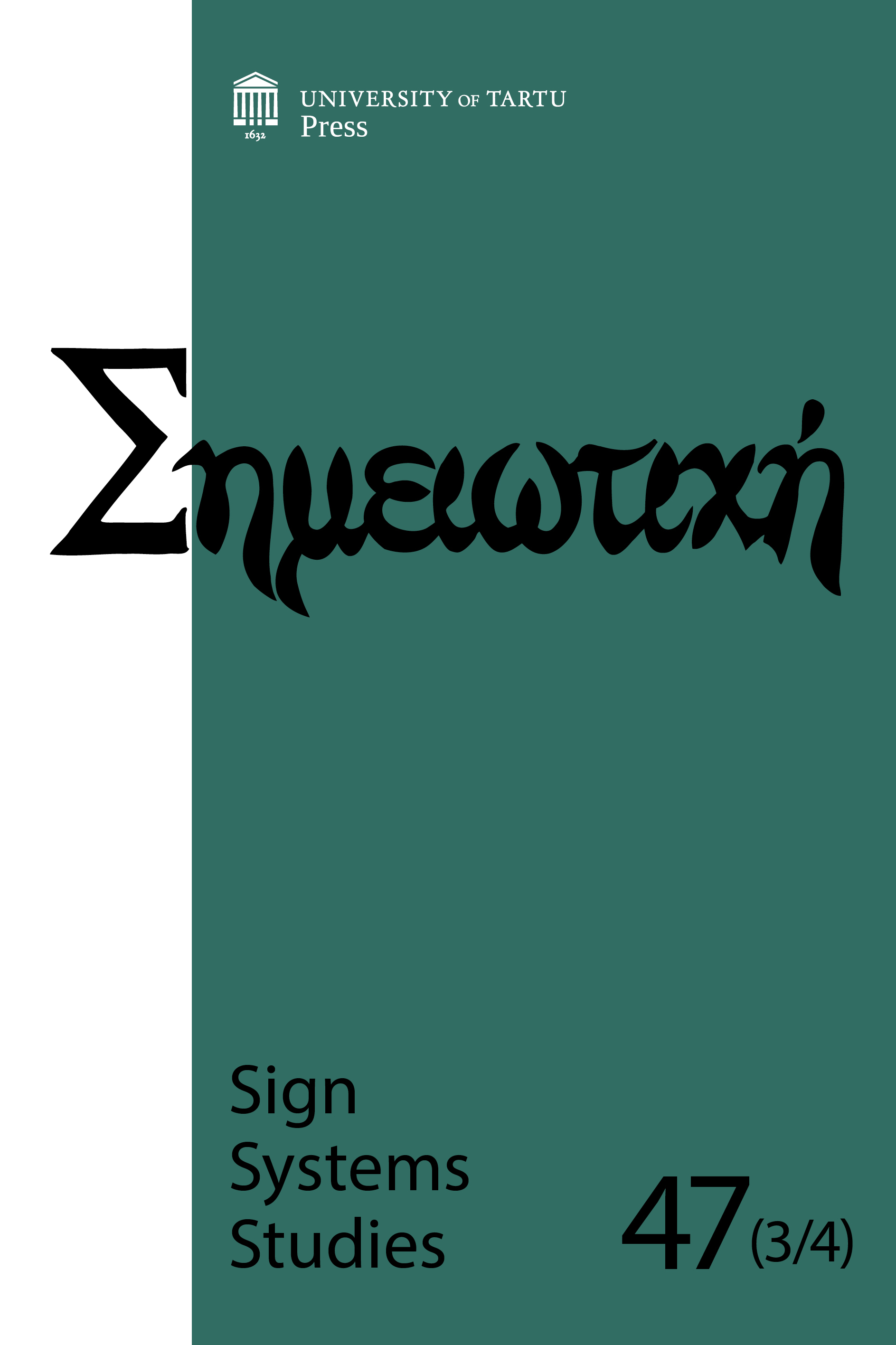The case for a semiotic method in Earth system science: Semantic networks of environmental research
DOI:
https://doi.org/10.12697/SSS.2019.47.3-4.09Keywords:
Anthropocene, semiosphere, network analysis, icon, modelAbstract
This paper sets a framework for using semiotics as an analytical method for Earth system science. It illustrates the use of such a method by analysing a dataset consisting of 32,383 abstracts of research articles pertaining to Earth system science, modelled as semantic networks. The analysis allows us to explain the epistemological advantages of this method as originating in the systems thinking common in both Earth system science and semiotics. The purpose of this methodological proposal is that of bringing the recent and critical planetary boundaries framework to the attention of ecosemiotics and biosemiotic criticism, and vice versa. Ecosemiotics is a branch of the biosemiotic modelling theory and is thus grounded in Charles Peirce’s schematic semiotics, but also developed in inspiration of Juri Lotman’s systemic semiotics. Both of these foundations of ecosemiotics are compatible with the rationale of Earth system science, given the schematism of Peirce’s semiotics and Lotman’s notion of meaning as an affordance of the biosphere. Far from exhausting the hermeneutic possibilities evoked by the discussed dataset, we argue that such semiotic analysis, made possible by the digital capacity of modelling large amounts of data, reveals new horizons for semiotic analysis, particularly regarding humans’ modelling of the environment.


